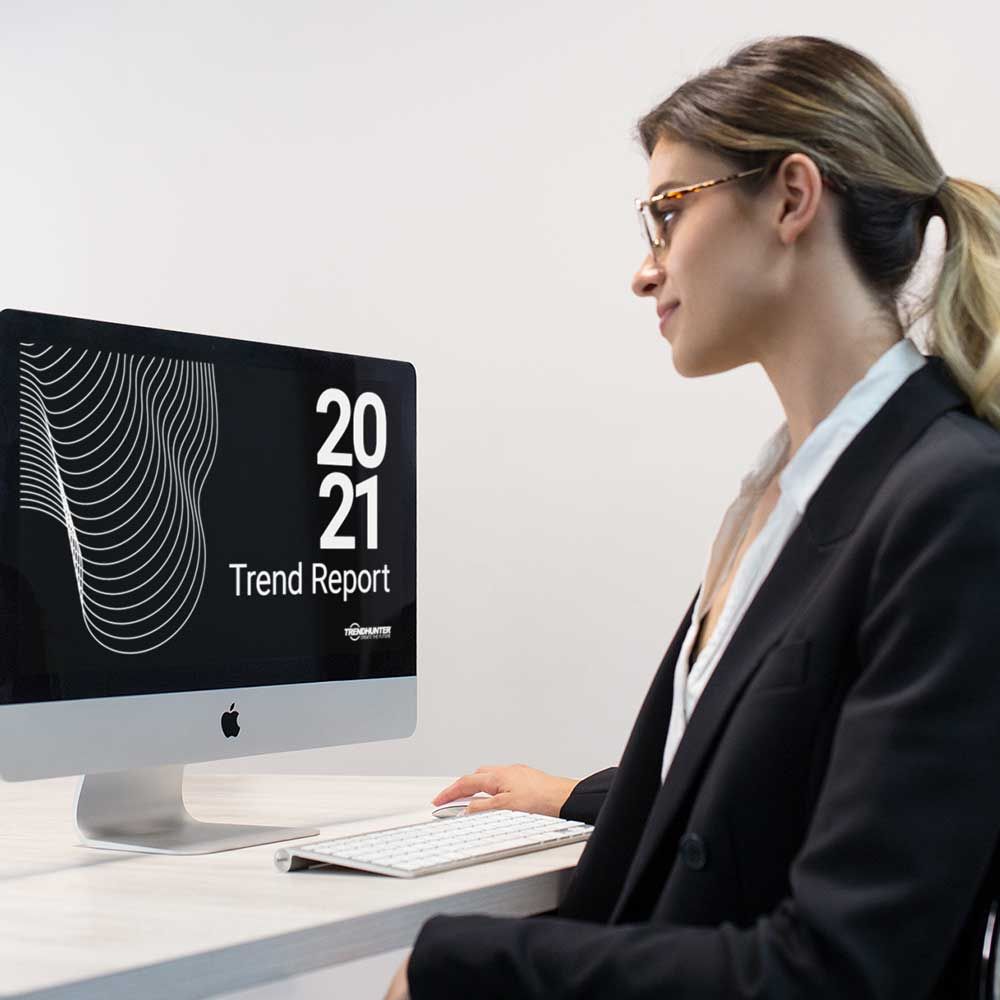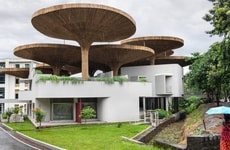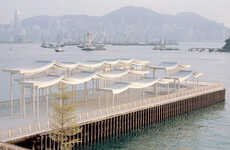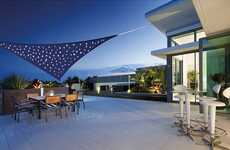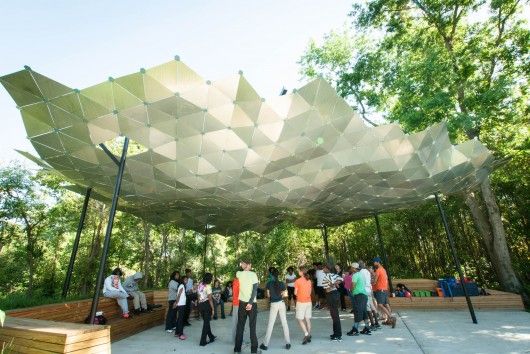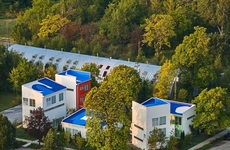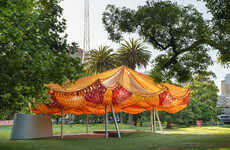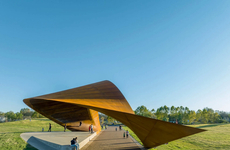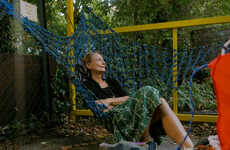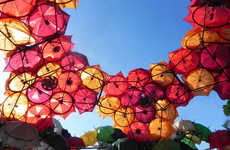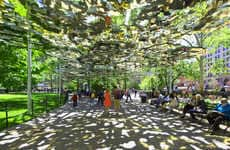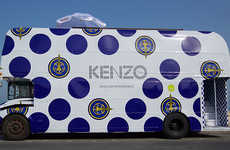
This Sculptural Shade Canopy is Made Out of Recycled Street Signage
Alyson Wyers — November 5, 2014 — Art & Design
This architectural shade canopy is the result of a collaboration between Tulane City Center, Tulane University architecture students and the Louisiana Outdoor Outreach Program. Photographed by David Armentor, the structure is made from traffic yield signs and is the result of a City Park challenge course.
The shade canopy was inspired by the natural shade the canopy of trees in the immediate area provide, as well as the nearby ropes course structure. The team of designers created a curving and faceted canopy out of aluminum which is suspended in the air using steel cables. An earthen berm also provides seating underneath.
The pavilion is intended to engage local underprivileged youth and help the Louisiana Outdoor Outreach Program provide better and safer programming for their at-risk students.
The shade canopy was inspired by the natural shade the canopy of trees in the immediate area provide, as well as the nearby ropes course structure. The team of designers created a curving and faceted canopy out of aluminum which is suspended in the air using steel cables. An earthen berm also provides seating underneath.
The pavilion is intended to engage local underprivileged youth and help the Louisiana Outdoor Outreach Program provide better and safer programming for their at-risk students.
Trend Themes
1. Upcycled Materials - Disruptive innovation opportunity: Explore the use of unconventional materials to create sustainable and unique structures.
2. Collaborative Design - Disruptive innovation opportunity: Foster partnerships between different organizations and stakeholders to create meaningful architectural projects.
3. Community Engagement - Disruptive innovation opportunity: Develop projects that actively involve and benefit local communities, particularly disadvantaged groups.
Industry Implications
1. Architecture - Disruptive innovation opportunity: Explore innovative design approaches and sustainable materials to create visually striking and environmentally friendly structures.
2. Education - Disruptive innovation opportunity: Incorporate hands-on architectural projects into educational programs to engage and inspire the next generation of designers and builders.
3. Non-profit - Disruptive innovation opportunity: Collaborate with other organizations to address social and environmental issues through architectural solutions that benefit local communities.
2.2
Score
Popularity
Activity
Freshness
